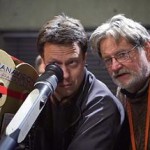Wolverine: The Mutant Experiment
 Donald McAlpine, ASC, ACS, has forged an amazing career in what he calls “World League” of film making. David Heuring spoke with him about his work in X-Men Origins: Wolverine
Donald McAlpine, ASC, ACS, has forged an amazing career in what he calls “World League” of film making. David Heuring spoke with him about his work in X-Men Origins: Wolverine
Born in Quandialla, New South Wales some of McAlpine’s first films were slow-motion records of athletes training for the 1956 Australian Olympic team that coaches used to analyse technique. During a trip to Sydney, he applied for a job as a stringer for the abc, and his work on a railroad story got him the job. Later, he transitioned to 35 mm colour documentaries, and that led to his first feature film credit, The Adventures of Barry McKenzie in 1972.
He went on to play a crucial role in the revitalization of the Australian film industry with projects like Breaker Morant, My Brilliant Career and The Getting of Wisdom. Since then he has compiled more than 50 feature film credits on projects that have taken him to virtually every corner of the world, including Predator, Romeo + Juliet, and The Chronicles of Narnia: The Lion, the Witch and The Wardrobe. His work on Moulin Rouge! earned him an Oscar nomination in 2002.
Earlier this year, the American Society of Cinematographers recognized McAlpine’s career by presenting him with the ASC International Achievement Award. TRUE FANTASY McAlpine’s most recent project is X-Men Origins: Wolverine, which continues the series of films based on the popular mutants from Marvel comic books, and stars Hugh Jackman in the leading role. The project brought McAlpine home to Australia — the majority of it was made in and around Sydney — and marks the cinematographer’s first collaboration with
director Gavin Hood (Tsotsi, Rendition).
“In a fantasy film, you must establish the language you are going to use, and keep to it,” says McAlpine. “Everything has to ring true. If the audience senses that something is false or unreal within the parameters we’ve set, the game is up. Everything I do must be in line to reinforce that quality.” McAlpine credits Hood and the writers with creating credible, accessible characters with wide appeal.
He designed the visual grammar around those characters. “Generally, this film is slightly on the darker side with neutral colours,” McAlpine says. “We made that decision because it supports the integrity of the performances. We were deliberately trying to convince the audience that this is a totally believable situation given the genre and the story.” The filmmakers chose to produce the film in Super 35 format composed in 2.4:1 widescreen aspect ratio combined with digital intermediate timing at EFILM in Los Angeles.

